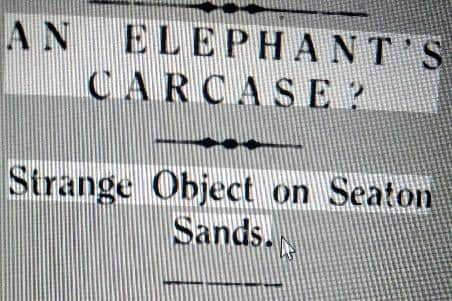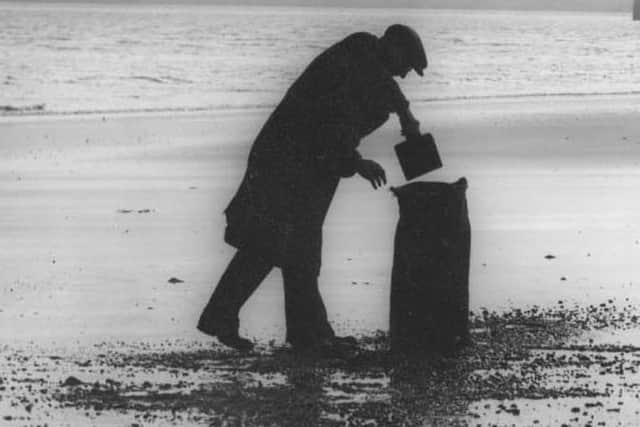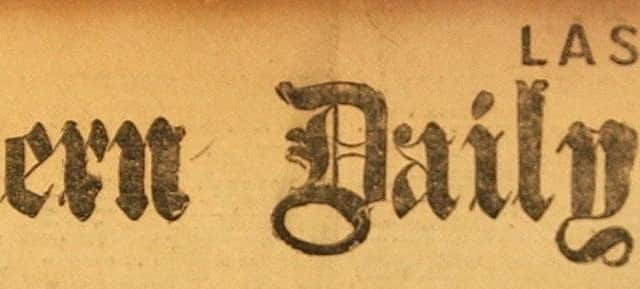The day an elephant was washed up at Seaton Carew - and the Hartlepool historian who has a possible answer to the mystery
and live on Freeview channel 276
The early morning sea-coalers, fishermen and dog walkers of Seaton are used to finding mysterious flotsam and jetsam on the beach.
But in 1922 they came across something they would not have seen before ... a dead elephant.
Advertisement
Hide AdAdvertisement
Hide AdHistorian Graeme Harper takes up the story in his latest retro animal tale.


The papers had plenty to say.
The Northern Daily Mail said rumours grew that a whole menagerie of animals had washed up from elephants to camels.
The paper added: “Near Carr House a dark mass of decomposed skin, embedded in which was a huge vertebrae the whole half covered with sand was pointed out as the elephant ... Another animal it was said had washed ashore near the Snook.’’
But it wasn’t just the Mail which carried the news. Word had reached further up the coastline.


Advertisement
Hide AdAdvertisement
Hide AdThe Sunderland Daily Echo and Shipping Gazette reported: ‘”The body had evidently been in the water for many months for practically only the skin and a
huge backbone and knee bones etc were left. The carcass -or portions of it - of another large animal have been left stranded opposite Seaton Snook. ‘’
It is impossible to know what exactly turned up that day. There does not appear to be any photographic evidence or scientific examination.
But the possibility of an elephant washing up on a British beach was not that far-fetched.


Advertisement
Hide AdAdvertisement
Hide AdIn November 1926, an elephant in a crate landed in Worthing, prompting the local paper to suggest that it had been part of a cargo of animals that had been recently shipwrecked in Deal. In October 1929, a badly decomposed specimen washed up in Aberavon in Wales.
This was a period when international trade in wild animals for zoos, menageries, circuses, and private collections was big business – and there was no other way of getting an elephant from A to B other than by boat. And elephants were not happy sailors.
The showman PT Barnum owned two elephants Jingo and Mandarin which were killed and deposited whilst at sea after becoming troublesome. Is it possible that a similar unwanted or shipwrecked animal or could wash up at Seaton in the winter of 1922?
The idea of a doomed ocean-bound menagerie off the North East coast appears in 1949 when supposed elephant bones were uncovered by the dunes in Seaton during the construction of beach huts.


Advertisement
Hide AdAdvertisement
Hide AdThe Northern Daily Mail of 14 April 1949 reported: ‘’ When Mr Robert Hewiston of Seaton Lane, West Hartlepool, a member of the Corporation working party yesterday took a hand in sorting out some large bones found at the base of a Seaton Carew sand dune being cleared for hut sites he had his own ideas about what they were."
Mr Hewiston’s theory is not that they were neither part of some prehistoric animal that once roamed Seaton Carew’s submerged forests.
Nor were they of a common or garden whale.
It was founded on a clear memory of something that happened forty years ago. “When I was a youngster,” he said “I remember seeing three dead elephants here on the beach. There was a ship wrecked in Teesmouth carrying animals for a zoo – tigers, elephants, and all sorts.”
The name of the ship or the date is not remembered but no doubt there are a number of people who may be able to confirm Mr Hewiston’s story.’
Advertisement
Hide AdAdvertisement
Hide AdMenageries were prone to self-combustion anywhere, but the rigours of ocean travel added to the usual state of chaos. However, there is no reliable documentary evidence to suggest any such incident took place locally.
Of course, the accident may have occurred much further afield. The body of the unfortunate Jingo was reportedly spotted 700 miles from where he was ditched.
Elephants had been appearing in town in travelling menageries since the mid 19th century. But it seems unlikely that if one had died in transit it would be
deliberately deposited on the beach in such a decomposed condition.
Advertisement
Hide AdAdvertisement
Hide AdThe logistics of lugging such a carcass over to Seaton in the early hours would be problematic and would surely have attracted the attention of the local constabulary.
Large unidentified animal carcasses have washed up on beaches all over the world – leading to much speculation about whether these represent unknown sea serpents or even remnant prehistoric monsters. These are now widely known as ‘globsters.’
Globsters are the carcasses of large sea creatures - usually basking sharks or whales – that have died at sea.
The problem with that theory is that the newspaper description included the presence of knee bones - which would not be present in a globster.
Advertisement
Hide AdAdvertisement
Hide AdAlso, the chances of more than one appearing together would be highly remote.
Perhaps the best guess is that this was some unfortunate beast that had met its maker at sea on its way to a zoo or circus and has eventually been washed up.
Either that, or a misidentified long-dead whale or shark. If there had been a tragic stricken menagerie, then this might explain the presence of more than one creature but where is the supporting evidence for this?
Sadly, the Seaton Elephant seems destined to remain an intriguing mystery.
Watch out for more fascinating Hartlepool tales from Graeme in the Hartlepool Mail soon – including the sea serpent found in Hartlepool docks.